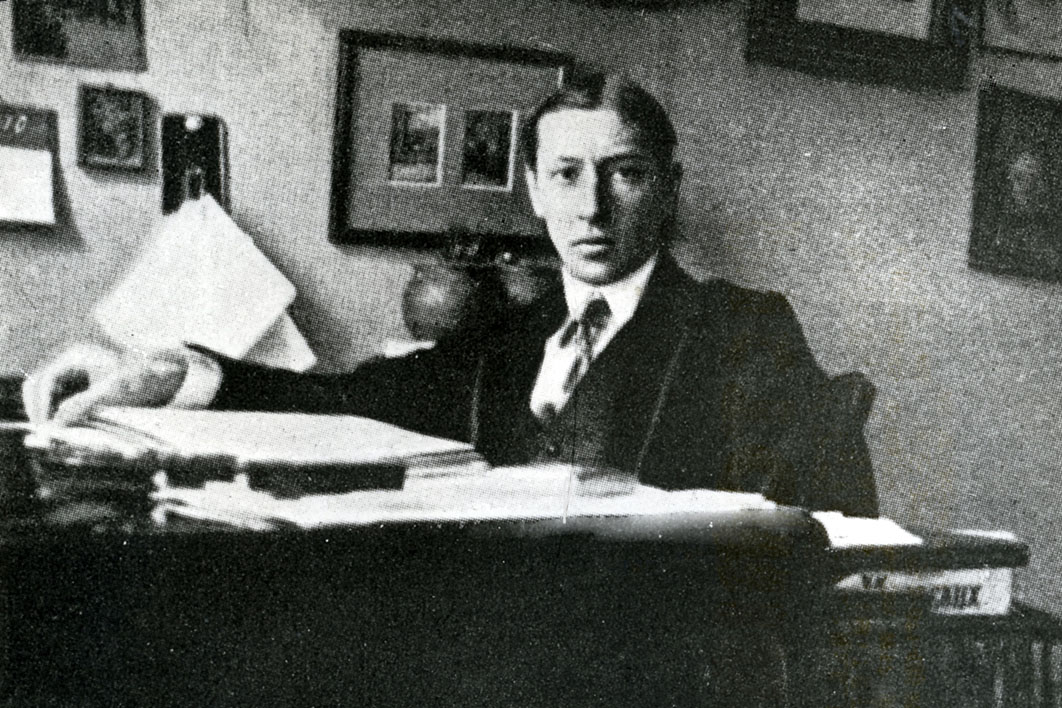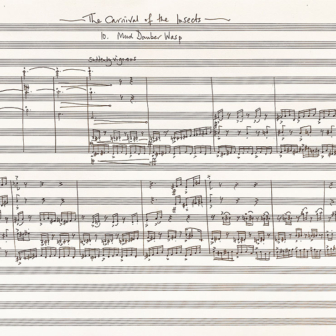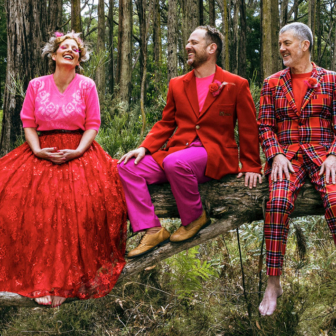It was December 1882, the year of Igor Stravinsky’s birth. The composer Franz Liszt was in Venice, staying at the Palazzo Vendramin as a guest of his son-in-law, Richard Wagner. During the visit, Liszt saw a funeral gondola draped in black, and had a premonition of Wagner’s death. He began work on an enigmatic piece, La lugubre gondola — the black gondola.
Weeks later Wagner was dead from a heart attack, his body taken up the Grand Canal by a gondola just like the one Liszt had seen. From Venice, the coffin made its way by train across Europe for a lap of honour through Bavaria, where the railway stations were themselves draped in black. Such was Wagner’s fame.
Nearly nine decades later, Stravinsky, too, would end up on a black gondola. But the Russian composer wasn’t leaving Venice, he was coming home to his favourite city. This time the measure of the composer’s fame was the fact that his funeral was beamed around the world on television. It was April 1971.
I remember watching the six o’clock news as a fourteen-year-old boy in England and seeing the flower-decked coffin make its way across the Venetian lagoon to the cemetery isle of San Michele, where it would be interred near the grave of Stravinsky’s great supporter and friend Sergei Diaghilev. I remember how the gondola seemed almost too small for the coffin, let alone the crew of four, who were (oddly, I thought) dressed in white. And I remember the black drape, trailing in the gondola’s wake.
Stravinsky was the twentieth century’s most famous classical composer, and he remains so. Although he didn’t need to, he courted this fame and was jealous when others got their share. It seems inconceivable that he should have fretted over the near ubiquity of Sibelius’s Valse triste, a popular classic in the middle of the last century, but from time to time he would knock out a short piece — three or four minutes, the length of one side of a 78-rpm shellac disc — in the hope it might catch on like the Finn’s sad waltz. His Piano–Rag–Music (1919) was one such attempt; the Circus Polka (1942) was another.
Stravinsky was an inveterate polisher of his own myths, giving interviews over the six decades of his career that were always, in the words of the musicologist Richard Taruskin, “charming, crafty, hyperarticulate, unerringly self-serving.” This from the composer of The Rite of Spring!
The notorious premiere of that work took place in May 1913 at Paris’s brand new Théâtre des Champs-Élysées. Commissioned by Diaghilev’s Ballets Russes, the music that emanated from the orchestra pit was unprecedented in its apparent barbarism and its use of convulsed syncopation. It has been suggested that the attendant riot was exaggerated or even prearranged, or that it was more about Nijinsky’s choreography than Stravinsky’s score. Whatever the truth, reports of a noisy disturbance did the composer no harm at all. From that moment on he was modern music’s top dog.
But how “modern” was he? Even as I write those words, the question strikes me as absurd. These days, I’d be inclined to answer it with another question: “Who cares?” But in the middle of the twentieth century — that century of modernism and progress — this sort of thing mattered very much.
It certainly mattered to Theodor W. Adorno, social philosopher and cultural theorist of the Frankfurt School, when he evaluated the competing claims of Stravinsky and Arnold Schoenberg to be the future of music. He came down reasonably firmly on the side of Schoenberg, figurehead of the second Viennese school (with Alban Berg and Anton Webern) and pioneer of twelve-tone composition.
It also mattered to the young John Cage, who in 1933 went shopping for a composition teacher and plumped for Schoenberg, who had abandoned Hitler’s Germany for Los Angeles. Later, when Cage met Stravinsky, the Russian asked (“plaintively,” according to Cage) why he had chosen Schoenberg instead of him. Cage told Stravinsky that he’d been attracted to the chromaticism of Schoenberg’s music and to the twelve-tone technique.
“My music is also chromatic,” Stravinsky insisted, adding that what he had never liked about Schoenberg’s music was “that it wasn’t really modern.”
There is truth in this remark. Both in his teaching (as Cage discovered) and in his music, Schoenberg was a traditionalist, and Viennese tradition ran deep. Take away the atonality, and you find in Schoenberg’s music an approach to rhythm and phrasing little different from that of his Romantic predecessors, and reaching all the way back to Haydn, Mozart and Beethoven. Even the atonality, as Schoenberg himself liked to explain, was the inevitable outcome of a century of burgeoning chromaticism — from late Beethoven and Schubert to Liszt and Wagner.
But much as he felt he’d made a clean break with it, Stravinsky could hardly escape the past. Eight years younger than Schoenberg, he was born when not only Liszt and Wagner were still alive, but also Brahms and Bruckner and Tchaikovsky. As a boy, he saw Tchaikovsky at the Mariinsky Theatre in St Petersburg, where Stravinsky’s father was principal bass. Two weeks later, Tchaikovsky was dead, and the eleven-year-old Stravinsky deeply affected.
There is an obvious connection between Tchaikovsky’s ballet scores — Swan Lake, The Sleeping Beauty and The Nutcracker — and the three scores Stravinsky wrote for the Ballets Russes between 1910 and 1913, culminating in The Rite of Spring. Musically, The Firebird (1910) is in the tradition of those earlier fairytale ballets, but there are strong hints of the syncopation that would soon take over Stravinsky’s music. Petrushka (1911) is bursting with syncopation, and also with colour and melody; and in The Rite there are long passages where there’s little but syncopation. The famous eight-note “stamping” chord of “The Augurs of Spring” repeats for pages, with the unpredictably shifting accents giving the music momentum, shape and meaning.
In his most famous utterance, Stravinsky explained that, in contrast to the music of the second Viennese school, the composition of The Rite was “guided by no system whatever.” Schoenberg, Berg and Webern, he explained, “were supported by a great tradition, whereas very little immediate tradition lies behind [The Rite of Spring]. I had only my ear to help me. I heard and I wrote what I heard. I am the vessel through which [The Rite] passed.”
And we can believe it. Almost. We know that the piece was composed at a piano, and that the composer was feeling his way. The octatonic chord in “The Augurs of Spring” doesn’t seem calculated: we can well imagine Stravinsky discovering it at the keyboard. Of the unprecedented syncopation in the final “Sacrificial Dance,” Stravinsky said that he could play it before he’d worked out how to notate it; and that sounds about right, too. But he chose his words carefully in regard to “immediate tradition,” for while he liked to deny that The Rite, in contrast to his earlier ballets, contained folk music, it was, in truth, full of it. Even its famous opening bassoon solo was closely modelled on a folk song from Lithuania.
For Adorno, The Rite of Spring was a celebration of primitivism, while the so-called neoclassical music that Stravinsky composed from around 1920 (in Pulcinella — another Diaghilev commission) until the early 1950s was “contrived.” He wasn’t necessarily wrong in his observations, it was just that he considered these traits in Stravinsky’s music to be faults. Adorno passed his judgements in a book, Philosophy of New Music, published in 1949, before the elderly Stravinsky embraced the twelve-tone techniques of his three Viennese contemporaries (all now safely dead) in the 1950s.
Like Beethoven’s before it, Stravinsky’s music falls neatly into three periods, and at first glance they are fiercely delineated. Any contemporary audience member familiar with the rebarbative sound world of The Rite of Spring must have been astonished, just seven years later, to encounter Pulcinella, its elegant score based on eighteenth-century Neapolitan tunes. By the same token the premiere of the austere Canticum Sacrum in 1955 in St Mark’s Basilica, Venice, would have seemed pretty shocking four years after Stravinsky’s fizzing burlesque, The Rake’s Progress, had received its premiere just along the canal at La Fenice.
Stravinsky’s first change of style was partly a matter of practicality. His pre–first world war successes established his name at the forefront of new music, but they brought him no income. Neither Tsarist Russia nor the Soviet Union was party to the Berne Convention on copyright, so Stravinsky, now permanently in exile, had no access to royalties. His solution was to write more music — shorter pieces for smaller forces — and write it fast. Perhaps having models, such as eighteenth-century songs and concerto movements, helped speed things up. Financial insecurity probably also accounted for the desire to have a hit record. Even after his move to the United States in 1939, a year before The Rite of Spring found a massive new audience through Disney’s Fantasia, he continued to remain cautious about money.
His second change of style was also a change of heart, and was provoked by another crisis, this time of relevance. After the second world war, young composers in Europe and the United States were searching for a wholly new way of doing things, a clean musical slate. Their idol was Schoenberg’s pupil Webern — not only his serial techniques but also his fractured melodic lines, crystalline textures and endlessly shifting instrumental colours. In 1945 at the Théâtre des Champs-Élysées another Stravinsky premiere was booed. This was the Paris premiere of the three-year-old, neoclassical Danses concertantes, and leading the booing was a composition student named Pierre Boulez.
Three years later, another young man — the American conductor Robert Craft — befriended Stravinsky, became his assistant and in time was the catalyst for the composer’s adoption of twelve-tone serialism. It was essentially Webern’s approach (fractured melodic lines, crystalline textures, and so on), but Stravinsky immediately found a way to personalise the technique. He composed in this manner for the rest of his life, applying it to pieces as different as his last ballet score, Agon (1957), the chamber opera for CBS Television, The Flood (1962), and his final masterpiece, Requiem Canticles (1966).
Listening to all this music now, fifty years after Stravinsky’s death, I increasingly hear the changing styles — the early Russian period up to and including the first world war; the neoclassical decades; and the final years of serial music — as a form of dress-up. The music underneath seems unified and the composer’s unique voice always rings true. It is there in the way he puts together small building blocks — musical cells — to form larger structures, working, at times, like a mosaicist. It is there in the motor rhythms with attendant syncopation that characterise nearly all his work. It is there in the way he voices his chords. Since this last aspect of his work is not as obvious as the others, it may be worth a little elucidation, because this, above all, is where Stravinsky’s musical fingerprints are to be found.
Stravinsky was an expert at writing chords so that they seemed to gleam with inner light. Aside from the sheer originality of his pitch choices, the chords were widely spaced, often covering a number of octaves, with big gaps between the notes. But just as importantly, the composer was adept at interleaving instruments — mixing winds, brass and strings in unusual ways — so that their distinctive timbres might create a wholly new sound. It was like a painter blending colours. You could argue that this is simply orchestration, which all composers do. But no one did it like Stravinsky. Here are two examples from The Rite of Spring.
In the first half of The Rite, there’s a still, quiet moment, just four bars long, after “Procession of the Sage” and before the concluding “Dance of the Earth.” The Rite is scored for a massive orchestra, and suddenly everyone falls silent except for seven solo instruments: three bassoons, two contrabassoons, a kettle drum and a single, muted double bass. The bassoons produce a chord — two high notes, one low — which frames the other instruments. While the second contrabassoon doubles the tapping of the drum and double bass, the first plays a fragment of melody: D flat, slowly rising to D natural, then falling back to D flat. Contrabassoons (sometimes called double bassoons) are big instruments, built for playing low notes, and the strangeness of this moment is underlined by having the contras play higher than the regular third bassoon.
After the ensuing pandemonium of “Dance of the Earth,” the second half of The Rite of Spring ushers in an eerie calm. The chord we hear is a polytonal blend of D minor with C sharp minor and D sharp/E flat minor, its inherent instability enhanced, once more, by the composer’s distribution of instrumental colour. Above a cushion of four widely spaced solo horns sit three flutes, two oboes and three clarinets, but where you might expect the flutes, as the instruments capable of the highest notes, to be on the top, they are in fact in the middle. Two clarinets and an oboe are above them, and at the bottom is the third clarinet — specifically an E-flat or “piccolo” clarinet, the normal function of which is to play loud and piercingly high (think of its solos in Strauss’s Till Eulenspiegel).
This, to be sure, is the composer’s ear at work, hearing and writing what he heard. It never failed him over the next half century, and it was never a matter of contrivance, whatever Adorno may have believed. Adorno also complained that Stravinsky’s neoclassical music was “monotonously effervescent.” This is not how we remember the central years of Stravinsky’s musical life. The charge might apply to a few of the pieces (though, once again, you’d have to believe, along with Adorno, that effervescence was a bad thing), but it will hardly do as a blanket description. The opera-oratorio Oedipus rex; the melodrama Perséphone; the ballets Apollo and Orpheus: effervescent? Symphony of Psalms? The solemnly hypnotic coda to that work is among the least effervescent music of the twentieth century; it’s also among the most mysterious.
So a word, finally, about endings. Right across Stravinsky’s career are moments when, just before the end of a piece, time seems to stop. Symphony of Psalms (1930) wasn’t the first instance of this. A similarly hieratic moment occurs in the closing pages of Symphonies of Wind Instruments (1920), dedicated to Debussy’s memory. And it happens again in the coda of the Octet (1923) for wind and brass, a little jauntier on this occasion, but scarcely less affecting.
At the end of Les noces (1914–22), the bustle of a Russian wedding culminates in the celebratory chiming of pianos and crotales (small tuned cymbals made of brass), punctuated by thrilling silences. More than four decades later this moment found its echo in the gentler ending of the Requiem Canticles — celesta, tubular bells and vibraphone ringing out at the composer’s own funeral in Venice.
But the end of Symphony of Psalms remains the most astonishing of all Stravinsky’s codas. I remember the first time I heard it, and the effect it had on me. I must have still been in school. I forget the chorus, orchestra and conductor (which is unlike me — I have a good memory for those things), but I do recall where I was sitting in London’s Royal Festival Hall: up the back of the stalls in the cheap seats.
The fact that it’s a physical memory, rather than a recollection of detail, is doubtless significant. The music of the last movement — a setting of Psalm 150 (“praise him upon the high sounding cymbals”) — ranges from the stately to the dynamic, but finally settles into a slow-motion glimpse of heaven. The chorus softly intones its falling triple-metre phrases as if in a trance, underpinned by the timpani, harp and two pianos — but especially the timpani — playing a steady, four-note ostinato figure. Round and round they go, coming together again after every group of twelve beats. The music was mesmerising and incredibly beautiful. I sat there, I remember, hoping it would never end. •





